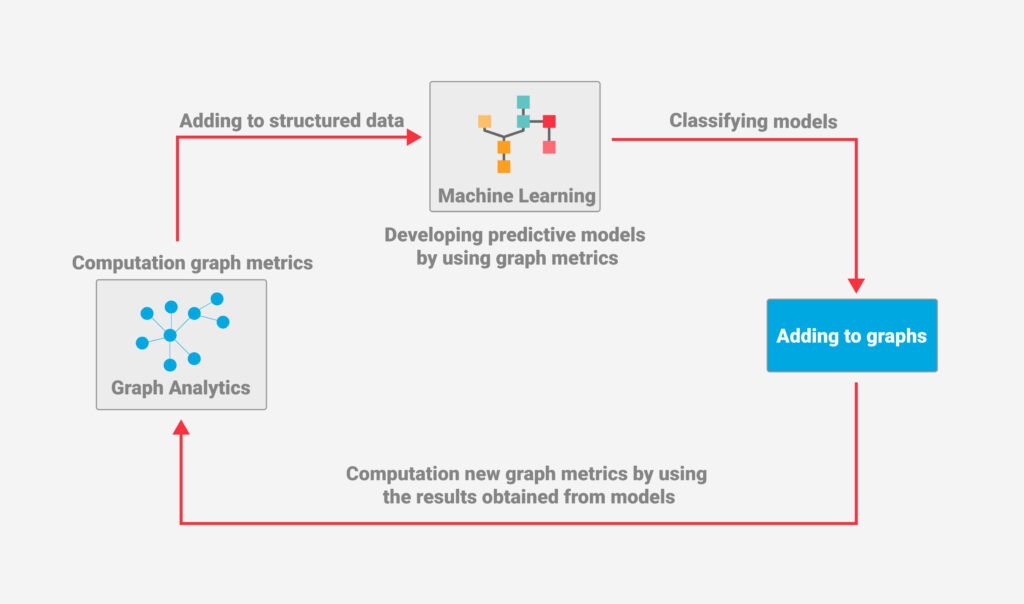Many organizations take advantage of artificial intelligence and machine learning solutions. In this article, we discuss how graph technology empowers machine learning processes.
Graph Models for More Accurate ML Predictions
With rapid developments in data sources, data analysis, and data storage methods, machine learning has an active role in applications such as personalized recommendations, predictive analytics, and crime detection. For these applications, graph technology provides more advanced ML predictions.
In general, traditional machine learning techniques work on data in tables. With this method, predictions are made on the data in the tables without considering the connections between entities. For example, it is difficult to use social relationships which are necessary to discover customer attributes with traditional ML algorithms. However, graph databases that store data as nodes and their connections complete this deficiency with a wide variety of graph algorithms such as betweenness centrality, degree centrality, shortest path, page rank. In other words, graph algorithms support existing machine learning processes for assigning categories based on relationships, calculating centrality, or measuring relationships over nodes. Hence, it is possible to make more accurate predictions by using the connections between data. It offers solutions in areas such as the detection of crime methods, the creation of customer profiles, the calculation of effective users or communities, or logistics problems by discovering hidden patterns in graphs.

Acquiring More Insights From Data
We mentioned that increase in data volume feeds machine learning models, and models are more predictive. However, obtaining and cleaning all the necessary data for accurate insights when training machines might be a difficult process. At this point, by including relationships in data sets, existing machine learning works can be complemented by graph features. Organizations that integrate graph technology into their machine learning applications state that the best results to train machine learning models and support field experts by discovering patterns from queries are achieved with this integration.
Let’s give an example of this approach that we frequently encounter in daily life. We are all familiar with personalized recommendations on platforms such as e-commerce sites and social media applications. This is where collaborative filtering comes into play, and similar user groups are identified based on consumer relations and purchasing histories to offer relevant recommendations. At this point, when companies benefit from graph algorithms as part of an artificial intelligence model, the natural semantics of graph relationships such as “customer – purchased – product” are easily interpreted.
One of the Most Common Usage Area: Crime Detection
The ability of machine learning algorithms to process large amounts of data sets is very effective in separating fraudulent transactions from legitimate ones. However, in our articles, we often mention the discovery of new methods by crime rings, and the power of graphs solutions to detect new methods. Combining Graph analytics with machine learning applications is very effective for the detection of suspicious patterns. Graphs use data from multiple data sources to integrate multiple nodes and leverage the machine learning predictions by analysing all connections between activities (including previous activities) on a single interface. In methods such as money laundering, criminals build their strategy to demonstrate their transactions are legitimate. For such situations, graphs are used to focus on relationships and machine learning models are trained considering these relationships for crime detection.
In summary, not only the data but also the connections between them are crucial in terms of training machine learning models. Graph analytics is positioned as the latest analysis technology for the detection of relationships between data, and it offers advanced machine learning and data analysis solutions to institutions.
How can your organization benefit from this advanced technology? Contact us to learn our solutions for your business objectives.
